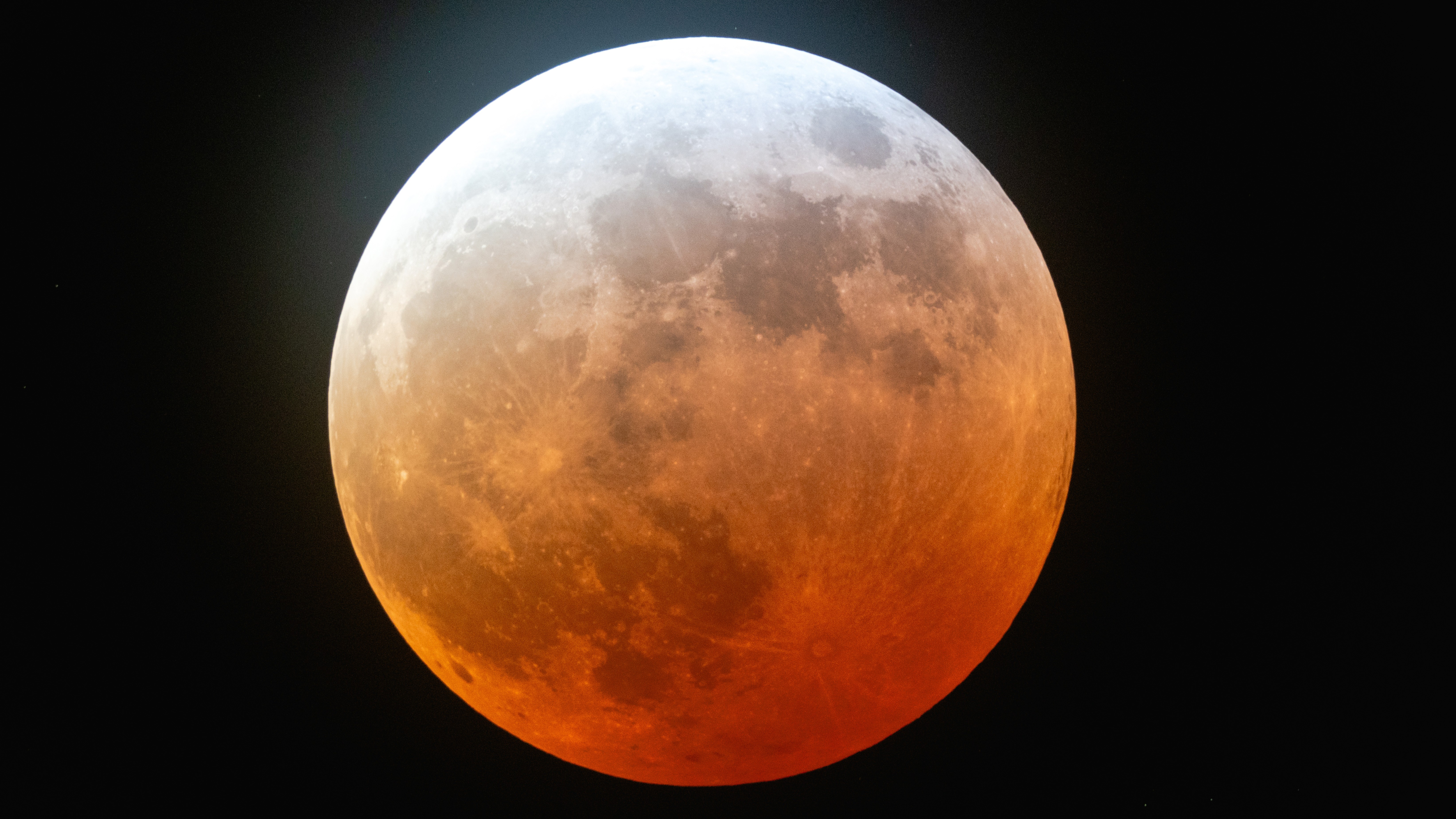When you purchase through link on our site , we may garner an affiliate commission . Here ’s how it works .
Grab yourstargazing field glasses , because tonight ( Jan. 13 ) , Mars will vanish behind the synodic month for several minute in an astronomical issue phone a lunar eclipse .
Coincidentally , the lunar occultation of Mars also fall out whenthe Red Planet enters opposition — that is , when Mars is directly opposite the sun in Earth ’s sky — meaning Mars will be at its big and brightest as it nears its faithful dot to Earth . This is the only lunar eclipse of Mars that ’s seeable from the United States in 2025 , so you wo n’t desire to miss this rarefied consequence .

The full Wolf Moon will completely block Mars from Earth’s skies on Jan. 13
To get the most out of your view experience , find oneself a emplacement that ’s far from hokey spark and grant a few minutes for your center to set to the dark .
The lunar eclipse of Mars will be visible from the adjacent United States , office of Canada and Mexico , and Western Africa . This mapping from In - the - Skyshows the path of the lunar eclipse of Mars .
Related : The 10 good stargazing events of 2025

Watch the moon ‘swallow’ Mars
Tonight , the moonshine will be full as it arise . ( January ’s full lunation is also called theWolf Moon ) . Mars and the lunar month will stay close together from the time they rise to the time they set . They will turn out around 5 p.m. Eastern Time on Jan. 13 and will set around 8 a.m. Eastern Time on Jan. 14 , though times will vary somewhat calculate on your location .
Mars will disappear behind the bottom bound of the moonat 8:44 p.m. Eastern Standard Time on Jan. 13and will emerge from behind the top edge of the moonat 12:52 a.m. EST on Jan. 14 , according toIn-the-Sky.org . However , these times will alter slightly depend on your exact viewing location . you may enter your location on the sidebar onIn - the - Skyto see the accurate start and terminate times for your location .
Mars will be easily seeable to the naked centre , appearing bright and slimly amber - tinted . However , this event will be best viewed through a brace of high - powered field glasses or agood backyard telescopeso you’re able to get a cheeseparing - up as Mars appears to crease the edge of the moon . Viewing the outcome through high - power opera glasses or a backyard telescope will also allow you to see the cherry-red hues of Mars and individual craters on the moon .

— China aims to be 1st to bring samples back from Mars
— Did alien life be in spicy water on Mars billion of years ago ?
— Gigantic ' spiderwebs ' on Mars are the next big target for NASA ’s Curiosity rover , agency discover

You might even be able to see Mars’northern icy ice detonator , which spans 620 miles ( 1,000 kilometers , and Valles Marineris , thelargest canyon in the solar organization . Valles Marineris is around 1,900 miles ( 3,000 kilometers ) long , 400 mile ( 600 km ) wide and 5 miles ( 8 km ) deep , perNASA . That ’s 10 times longer than the Grand Canyon , and three time as thick .
The next lunar occultation of Mars will be in February ; it will be visible from northerly Scandinavia , Russia and parts of Asia . After 2025 , the next lunar eclipse of Mars that will be well viewable to skywatchers in the U.S. wo n’t happen until2042 — so do n’t lack this cosmic spectacle tonight !














